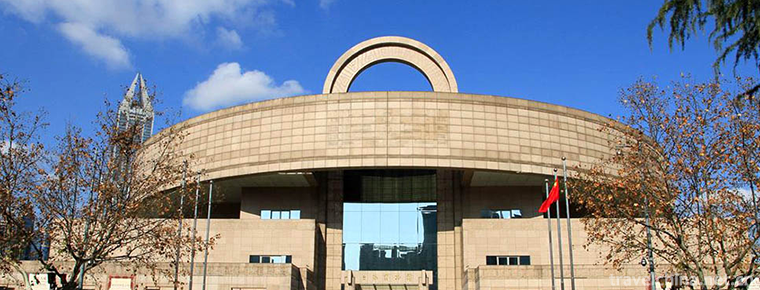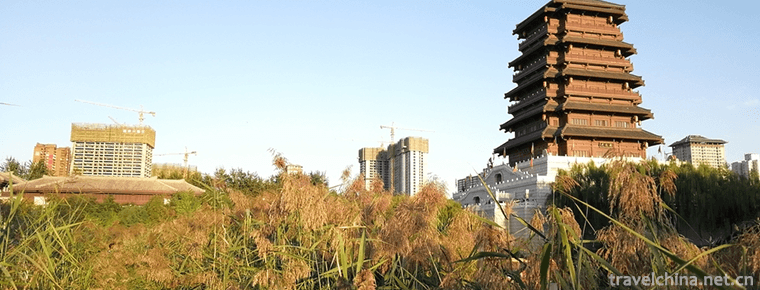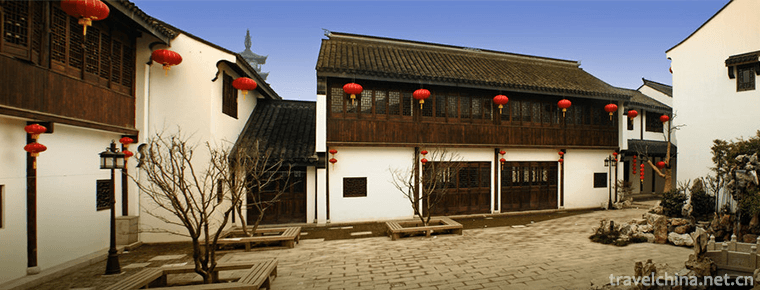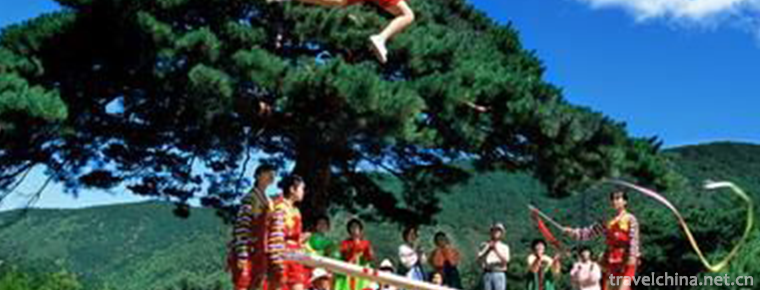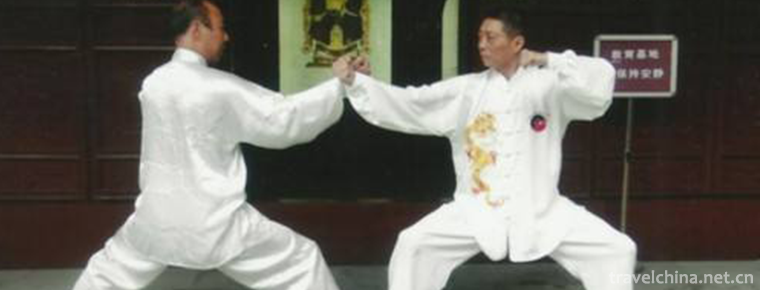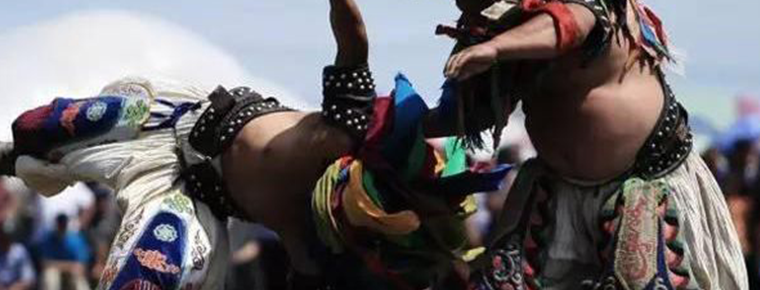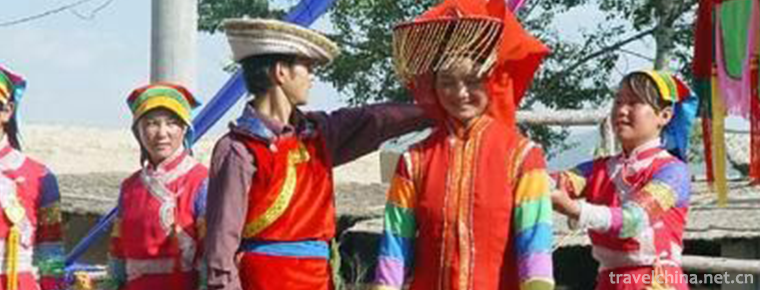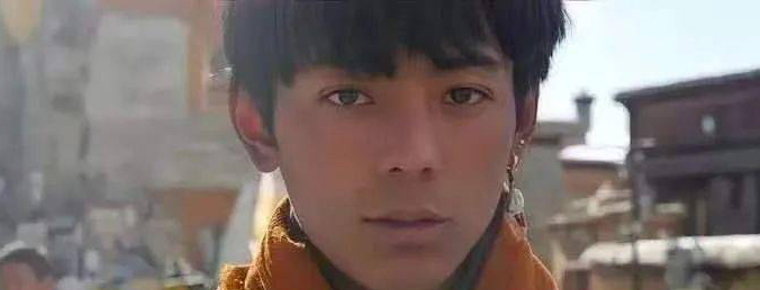Sayerhao of Tujia Nationality
Sayerhao of Tujia Nationality
"Sayeer Hao" of Tujia nationality in Changyang, Hubei Province is a kind of sacrificial song and dance of Tujia nationality in the middle reaches of Qingjiang River valley. "Sayer Haw" means jumping funeral or "jumping funeral drum".
In 2006, Sayerhao of Tujia nationality was listed on the national intangible cultural heritage list.
historical origin
"Sayer Haw" has a long history. Some people died in the village. Several mourners were in groups, singing and dancing on drums and lyrics in the spiritual hall. It has been circulating for thousands of years in Tujia mountain villages. Its style is magnificent and powerful. It fully reflects the vigorous and bold personality of Tujia men. Tang Fanchuo's "Manshu" talks about the funeral rites of the Tujia ancestors of the Ba people and writes: "Pa's sacrifices to their ancestors, drums and sacrifices", and his parents "first mourning, drums and mourning, their songs must be chanted, their people will jump". In Changle County Chronicle of the Qing Dynasty, it was said: "When family members are bereaved, their neighbours hang up until night, they say they will die together; when they play drums beside the coffin, they say they will mourn drums; when they sing slang songs and lamentations, they say they will mourn drums." "
Stylistic features
"Sayerhao" is a kind of traditional sacrificial song and dance. The villagers gather in front of the coffin of the deceased in the house of Xiaojiatang. Men sing and dance. Women wear bright clothes to watch and cheer. This kind of activity is often held all night long. Tujia people think that life and death are natural as the changes of seasons, and that the death of the old people who enjoy every day conforms to the law of nature and deserves celebration. If an old man dies, they think it is a celestial event called "White Happiness". Therefore, no matter whether the deceased is a man or a woman, or whether the deceased is famous or not, the neighbours of the countryside will play a night of mourning for the deceased, in order to miss the deceased and comfort the living. "When people die, everyone gathers to help with a dozen drums." In this way, Tujia people express their broad outlook on life and death with wonderful singing and dancing.
Basic movements
"Sayerhao" mainly reflects ancestor totem, fishing and hunting activities, agricultural production, love life, historical events and so on. It reflects people's memories of the history of their own nation and their long-formed moral consciousness and right and wrong concepts. Because Tujia people have lived in the mountains with high mountains and longitudinal rivers for generations, their living habits and working methods of crossing rivers and climbing rocks over a long period of time have formed a unique style of expression of Sayerhao.
When dancing, the singer beats the drum and sings first. The dancer dances with the drum. There are 24 routines in the form of dance. The rhythm is characterized by turning, bending knees, and trembling. There is a rhythm of 6/8 beats with syncopated notes. No matter what rhythm is used, no matter how many people take part in the dance, the movements are very symmetrical. The gestures are generally waist-bending, knee-bending, eight-word step, hip swing and hand-winding. The body flutters up and down or left and right according to the rhythm, and the hands, feet and hips move in the same direction along the side.
"Sayer Haw" dance moves, strong, bold and bold. "("Yishui Ancient Wind") According to the imitative action image, there are the following: Wind and Phoenix Spreading Wings','Rhinoceros Looking at the Moon','Ox Scratching','Dog Eating the Moon','Swallow with Mud','Tiger Down Mountain'... The most spectacular is the'tiger down the hill'. The dancer jumps and suddenly changes the drum point. One of the dancers jumps into the air suddenly, one of the dancing partners flies, two of them stare at each other. They suddenly clap their hands and bump their elbows, jump forward and backward, jump and flutter, imitate the action of the tiger's prey, and emit a whistle in their mouth. The last one is pulled up from the top of the head to the back, and the action is vivid.“ 。
The movement scheduling of "Sayer Haw" is more regular. "Anti-carcass" runs through the whole process, that is, "sinking along the edge, shaking and trembling. "The dancer's body shows beauty in contraction and extension, push and pull, stand up and bend, swing and shake, tremor and shake. The first kind of dispatch is that two people face to wrap their hands, then move up to the right side of the other party and exchange positions; the second kind of dispatch is that two people face to wrap their hands, then move up to the right side of the other party, then turn left to return to their original position; the third kind of dispatch is that two people start with their left foot, first step face to face, second step back to back, third step face to face, fourth step back to back, and then turn left half circle. To be face-to-face, this kind of action scheduling appears more in the core dance segment.
The movement is that the dancer's feet are close to each other, the first pat moves forward, the second and third pats tremble, and his legs stagger. It's a bit like disco, but the shoulders are close to each other, the knees are bent, the bow is bent, the hands are hugged, the body shakes, and it's a bit like space dance. It's very beautiful. "Sayerhaw" highlights the word "tiger", that is, "imitate tigers to move forward and backward, impact, jump and rotate each other. The dancer's body shows the tiger's power in the air. Its basic action is: the two sides shoulder to shoulder jump, you enter the leg and he bows, one side of the buttocks by force, the other side take advantage of the potential to jump into the air, a jump, very like hungry tigers on food, tiger's "power" is vivid. "Sayer Haw" has many songs and complex structures.
"Jump funeral" in the foot movement is very rich, Paradise, Rongping and other areas, used to lift the left foot or right foot, to another foot in front of a click before walking, Ziqiu, Taoshan and other areas, used to suck up the left leg as a starting action, Shuanglong and other areas in the mouth of the fishing gorge, walking the first beat, left foot to the left and right to swing once, Paradise, Rongping, Huojiaoping areas, walking, body. The body appears relaxed, Xiaoping walks, folk artists called "broken rice step". Walking, like stepping on cotton, vibrates with the rhythm of music, giving people a sense of lightness. Southwest China, namely Ziqiu, Taoshan, Ma Chi, Yuxia Kou and other places, each line of foot firmly grasps, folk artists called Tiger step, the pace is larger, appears stable and powerful.
Music
Dance music and singing can be divided into high-pitched or flat-pitched tunes. The melody rhythm is 2/4, 4/4 and 6/8, with 6/8 as the main rhythm. "Sayer Haw" has only one kind of drum. When dancing, "one Person sings with a pair of wooden hammers beating drums. Two people go to the hall to step on drums, sing and dance. Sometimes four people alternate and interlace with each other. It is called'Walking Four Gates'... The drum is not only an accompaniment instrument, but also a tool for the singer (drummer) to conduct dance, exchange music cards and adjust mood. One drum is multi-purpose, beating drum hearts, drum edges and drum states to find different sounds. This reminds us of the ancient battlefield scene of "drum-beating march". When dancing, the clappers beat out a variety of changing drums through the hearts, edges and edges of the drums, leading the song while beating the drums, while the dancers "drums with heels and drums with feet" and singing. With the command of the drummers, the dancing posture and rhythm are changed from time to time. When it is agitated, it is like a mountain wind whistling, when it is relaxed, it is like a light boat rippling, relaxed, old and simple. "Sayeerhao" has been spreading among the Tujia people from generation to generation, imbued with the wisdom and deep national feelings of the Tujia people.
Most of the lyrics of "Sayerhao" are to praise the deceased for their merits and virtues, and to console the deceased with the achievements of their descendants; to comfort the filial piety and family festival, mourning and obedience, inheriting the wishes of their ancestors, and then creating brilliance. Sing some heroic deeds, especially the achievements of military generals, such as General Yang and Xue Rengui's Expedition to the East. "There are two kinds of singing: high-pitched and flat-pitched. The high cavity is stiff and high, like sound vibrating trees; the flat cavity is smooth and smooth, like gurgling water. Its main melody is to teach people to turn grief into strength, to refresh their spirit and to move forward.
The audience of Sayerho is male, female, old and young, but dancers have traditional iron rules: men and women do not dance. As the saying goes, "A woman jumps and loses her family. "Dancing hand and foot, singing and dancing, physical exhaustion is very large, such as in hot weather, but also play Bare-Armed jump, sweat like rain. "Sayer Haw" dances vigorously, singing more and more exciting, dancers are male warriors, plus drum accompaniment, with the important factors of the war, performing, with a strong gunpowder flavor, said that it evolved from the war dance, not only reasonable, but also based on. The Book of Mountains and Seas records the Ba people's "dry dancing, using troops to kill". This kind of dance history is called "Wu Dance". About four thousand years ago. "Hua Yang Guo Zhi Ba Zhi" records: "Ba Shi is brave, singing and dancing with Ling Yin people (Yin people) before the steep fall, the old world called it, Wu Wang Zhai, before and after the song and dance. "There are songs and dances in the sacrifice of mourning, which is the early"Sayer Haw".
Current situation of inheritance
In order to keep watch on the history and carry forward the tradition, our state has listed Sayerhao as a list of intangible cultural heritage for protection, and has inherited and utilized it as a cultural brand of "one county, one product". A seminar hall has been set up in Sanguan, Badong, and several Sayerhao artistic teams have been formed in Yesanguan and Taiping Towns of Qing Dynasty. A systematic record of cultural people represented by musician Liu Qiming and the publication of "Sayer Haw in the Qingjiang River Basin" was published. The Sayer Haw Class represented by state folk art master Huang Youxiu performed on the stage of Hunan, Hubei, Guizhou and Chongqing folk art exhibitions many times and was warmly welcomed by the audience. The Sayerhao group represented by Tan Xuechong, a master of state folk art, entered the hall of the 12th and 13th Green Song Competition of CCTV respectively, and won bronze and gold prizes successively in the original ecological singing group, as well as the title of the favorite singer of the national television audience.
Inheritance Significance
"Sayerhaw" is the art of singing, dancing and music. Its voice is eight degrees high in male voice, and its tune is an ancient characteristic of three degrees. It only exists in the Xingshan area of the North Bank of the Three Gorges of the Yangtze River in the north of the Zhabei River in Qingjiang River, and has become the most outstanding in other kinds of songs. Its musical structure is similar to that of Chu Ci, from which the shadow of sacrificial music in ancient Bachu can be found. The singing and dancing show an invaluable positive attitude towards life, which runs through the open-minded and liberal concept of life. "Sayerhao" is unique to the Tujias in Qingjiang, which has certain artistic value and academic research value.

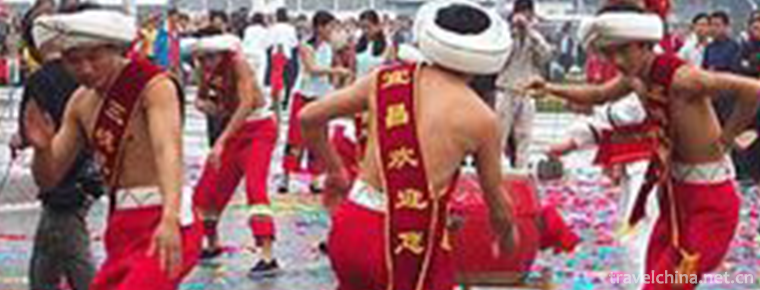
-
Online Shopping
Online shopping is to retrieve commodity information through the Internet, and send out shopping requests through electronic order forms, then fill in the number .
Views: 218 Time 2018-11-13 -
Shanghai Museum
The Shanghai Museum was founded in 1952. It was originally located at the Old Jockey Club at 325 Nanjing West Road. It moved to the Zhonghui Building at 16 Henan South Road in October 1959.
Views: 135 Time 2018-12-19 -
Seoul Lake Park
Seoul Lake Park is located in Weiyang District of Xi'an City, Shaanxi Province. It is 200 meters west of the cross of Fengcheng 4th Road and Zhuhong Road. It was originally the Unity Reservoir .
Views: 124 Time 2019-01-13 -
Wanjiazhai Water Conservancy Scenic Area of the Yellow River
Wanjiazhai Water Conservancy Project is located in the canyon of the north main stream of the Yellow River from Toketo to Longkou. It is the first of eight cascades planned and developed in the middle.
Views: 231 Time 2019-01-18 -
Zhou Qiao old street
Zhouqiao Old Street is a national AAAA tourist attraction. The old street of Ximen in Jiading is located on the west side of Bole Square in downtown Jiading.
Views: 165 Time 2019-01-21 -
Korean Springboard and Swing
Springboards and swings are the most popular traditional folk sports for Korean women, and they have a broad mass character..
Views: 202 Time 2019-04-16 -
Gentle boxing
Mianquan is a kind of uniform, soft, round, coherent, rigid and soft traditional boxing, which belongs to the intangible cultural heritage of Shanghai. Its movement is soft like cotton, the shape and .
Views: 130 Time 2019-06-04 -
Nadam
Nadamu is Mongolian, also known as Nair. Nadamu is a Mongolian transliteration, meaning "entertainment, games" to express the joy of harvest. The Nadamu Congress is a traditional festival wi.
Views: 73 Time 2019-06-06 -
Qingyang Opera
During Jiajing period of Ming Dynasty, Yiyang Tune of Jiangxi flowed into Qingyang County of Chizhou Prefecture in Southern Anhui Province. It was combined with local language, folk opera (Kunshan Tun.
Views: 148 Time 2019-06-11 -
Tu Wedding
The custom of Tu people's wedding in Huzhu Tu area has a long history. Tu people's wedding custom is gradually formed and developed through the struggle with nature and the long-term practice of produ.
Views: 286 Time 2019-06-23 -
Tamdrin Dingzhen
Zhaxi Dingzhen (Chinese Name: Ding Zhen), born in 2000, lives in Litang County, Ganzi Prefecture, Sichuan Province..
Views: 523 Time 2020-12-01 -
Guangyuan primary industry
In 2018, the annual grain sown area in Guangyuan City was 311300 hectares, down 0.5% from the previous year. The total grain output was 1.5641 million tons, down 0.4%. Among them, the grain output in spring decreased by 0.7% to 384900 tons, and that .
Views: 362 Time 2020-12-15

